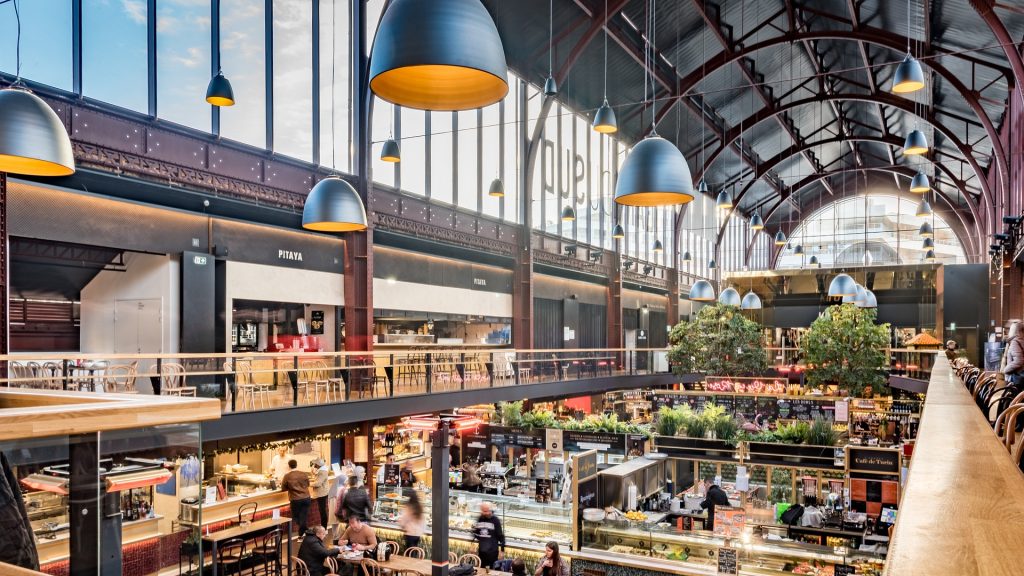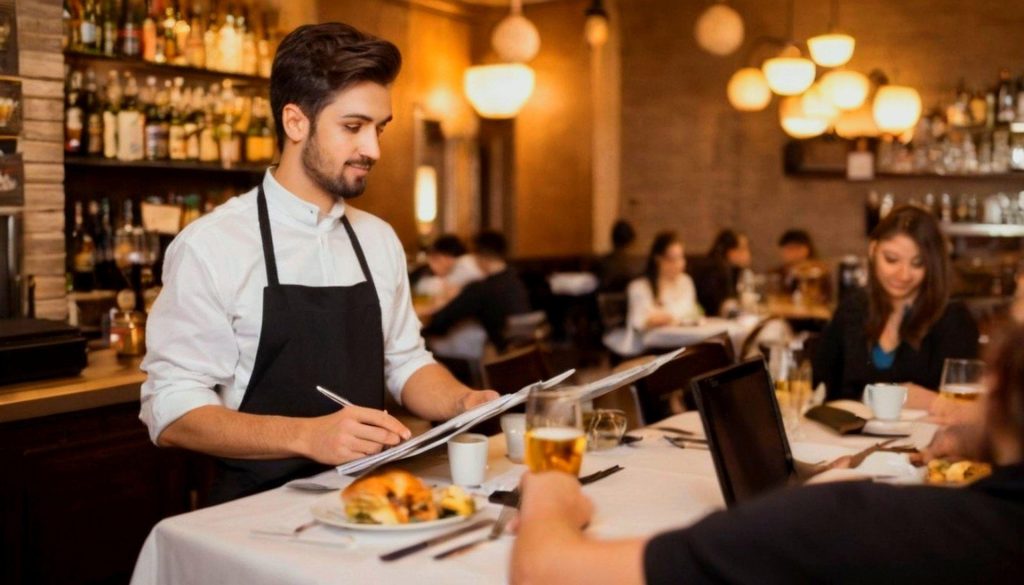The restaurant industry faced an unprecedented challenge when the COVID-19 pandemic struck. With lockdowns, social distancing rules, and health concerns dominating the global landscape, restaurants were forced to close their doors or drastically change how they operated. Many shifted to takeout and delivery models, while others experimented with outdoor dining or virtual services. These sudden changes created immense strain, but they also sparked innovation and resilience within the industry.
As we move into the post-pandemic era, restaurants must pivot again to thrive. The way customers dine, order, and interact with restaurants has forever changed. Health and safety remain a top priority, and customers now expect seamless, tech-driven experiences. The businesses that can adapt quickly will not only survive but also stand out in a competitive market. Pivoting is essential for maintaining customer loyalty, ensuring profitability, and staying relevant in an increasingly digital world.
This article will guide restaurant owners through the crucial steps to pivot successfully post-pandemic. It will cover how to embrace technology for ordering and delivery, revamp your menu, adapt to new dining models, streamline operations for efficiency, and leverage marketing to keep customers engaged. By following these strategies, restaurants can navigate the new normal and set themselves up for long-term success.

The Impact of the Pandemic on the Restaurant Industry
The COVID-19 pandemic brought massive disruption to the restaurant industry, forcing businesses to adapt almost overnight. As governments implemented lockdowns and social distancing measures, restaurants were among the hardest-hit sectors. Many were compelled to shut down entirely for months, while others operated at limited capacity, significantly reducing revenue streams. Dining rooms that once bustled with customers sat empty, leaving owners and staff uncertain about the future.
To survive, restaurants had to pivot quickly to alternative models. Takeout and delivery became lifelines for many, with third-party delivery apps and in-house solutions surging in demand. Outdoor dining also gained popularity, as customers sought safer environments to enjoy meals. For some, this meant investing in outdoor setups like tents, heating lamps, and patio spaces, turning previously unused areas into functional dining zones.
Beyond operational changes, consumer behavior shifted in ways that will have long-lasting effects. Health and safety became top priorities, with customers expecting strict hygiene standards and contactless options. The convenience of online ordering and delivery has created new customer expectations, making digital presence a necessity rather than an option. These changes highlight that the restaurant industry cannot simply return to “business as usual.” Instead, the pandemic has reshaped dining habits and set new standards that restaurants must embrace to stay competitive in the post-pandemic world.
Why Pivoting Is Essential for Post-Pandemic Success
For restaurants, returning to pre-pandemic business models may no longer be a sustainable option. Consumer preferences and industry dynamics have shifted dramatically, and clinging to old practices risks leaving businesses behind. Before the pandemic, many restaurants relied heavily on dine-in traffic, but today, customer demand leans strongly toward flexible options like delivery, takeout, curbside pickup, and even meal kits. Ignoring these shifts could result in declining customer interest and lost revenue opportunities.
Pivoting allows restaurants to adapt to these new realities and meet customers where they are. By embracing trends such as digital ordering systems, stronger online presence, healthier menu options, or eco-friendly packaging, restaurants can remain relevant while maintaining profitability. Adjusting operations doesn’t necessarily mean a complete overhaul; it can be as simple as expanding delivery services, introducing loyalty programs, or offering subscription-based meals that provide predictable revenue.
Early adaptation also creates a competitive advantage. Restaurants that pivot quickly are more likely to attract loyal customers, build stronger community ties, and establish themselves as forward-thinking businesses. While others may hesitate to change, those who embrace innovation position themselves not only to survive but also to thrive in the evolving post-pandemic landscape.
Key Strategies for Pivoting a Restaurant Business Post-Pandemic
Embrace Technology for Digital Ordering and Delivery
One of the most significant changes in the restaurant industry after the pandemic has been the rise of digital ordering and delivery services. Customers have grown accustomed to the convenience of browsing menus, placing orders, and making payments online, so restaurants must meet this demand to stay competitive. Developing a user-friendly app or integrating with popular third-party platforms such as DoorDash or Uber Eats can expand a restaurant’s reach and attract new customers who prefer digital convenience.
In addition to delivery, offering seamless digital experiences like QR-code menus and contactless payment options can enhance customer satisfaction, especially among tech-savvy diners who prioritize safety and speed. Restaurants can also use digital platforms to gather customer data, helping them better understand preferences and create personalized promotions. Loyalty programs built into apps encourage repeat business by rewarding frequent customers.
Embracing technology isn’t just about convenience—it’s about future-proofing the business. Restaurants that invest in these tools not only provide a better customer experience but also increase operational efficiency. From reducing errors in orders to optimizing delivery routes, technology enables smoother processes while ensuring restaurants remain relevant in an increasingly digital-first dining landscape.
Revamp Your Menu for Takeout and Delivery
Post-pandemic dining has elevated the importance of takeout and delivery-friendly menus. Unlike traditional dine-in meals, food prepared for delivery must maintain its quality and presentation after traveling. Restaurants need to design menus with portability in mind, choosing dishes that hold up well in transit without sacrificing taste. Items that quickly lose freshness or don’t transport well should be limited or adapted for better shelf-life.
Packaging plays a crucial role in customer satisfaction. Investing in eco-friendly, durable containers ensures food arrives hot, fresh, and visually appealing. Beyond individual meals, offering family-sized portions, combo deals, or meal kits has become a popular option. These cater to families or groups seeking affordable, convenient dining experiences at home while still enjoying restaurant-quality food.
By optimizing menus for delivery, restaurants not only meet evolving consumer needs but also reduce waste and maximize efficiency. Focusing on a smaller, more delivery-friendly menu can lower ingredient costs while improving consistency. Additionally, adding “heat and eat” meal kits allows restaurants to diversify revenue streams by tapping into customers who want the flexibility of preparing food at their convenience. A thoughtful menu strategy ensures restaurants thrive in a delivery-dominated era.
Focus on Outdoor Dining and Adaptation to Local Restrictions
During the pandemic, outdoor dining became a lifeline for many restaurants, and its popularity has continued in the post-pandemic era. Customers value open-air seating for both safety and ambiance, making it an essential strategy for restaurants to retain and grow clientele. Even in areas where restrictions have eased, outdoor dining remains attractive to diners who prioritize health, fresh air, and a pleasant dining experience.
Restaurants should think creatively about how to use available outdoor space. Parking lots, rooftops, and sidewalks can be transformed into inviting dining areas with the addition of shade, heaters, lighting, and comfortable seating. Simple design improvements like plants, décor, or weather protection can elevate the outdoor experience and encourage repeat visits. Moreover, adhering to local regulations while maximizing capacity ensures safety and compliance.
Outdoor spaces also provide opportunities for hosting events, live music, or themed nights, creating memorable experiences that encourage customer loyalty. For restaurants in regions with colder climates, investing in solutions like outdoor heaters, igloos, or enclosed patios ensures year-round usability. By prioritizing outdoor dining, restaurants not only adapt to health-conscious behaviors but also diversify their dining options, giving customers more reasons to return.
Streamline Operations and Focus on Cost Efficiency
The pandemic highlighted how fragile restaurant margins can be, making cost efficiency a critical strategy moving forward. Streamlining operations starts with evaluating the menu—fewer items mean reduced inventory needs, less waste, and quicker preparation times. Simplifying the menu to focus on best-selling and delivery-friendly dishes allows restaurants to operate more profitably without sacrificing quality.
Another way to cut costs is through better supplier negotiations. Building strong relationships with vendors or sourcing from local suppliers can lower expenses and ensure reliability. Restaurants can also adopt technology solutions, such as automated inventory tracking, to avoid overstocking and reduce waste.
Flexible staffing models are equally important. Employing part-time or gig workers helps balance labor costs during fluctuating demand, ensuring the business remains adaptable without overburdening payroll. Cross-training staff members across multiple roles also improves efficiency, ensuring smoother operations during peak times.
Streamlining does not mean compromising customer experience—it’s about working smarter. By optimizing workflows, leveraging technology, and reducing unnecessary overhead, restaurants can focus more resources on delivering excellent food and service. Cost efficiency not only strengthens resilience but also frees up capital to invest in growth and innovation.
Strengthen Health and Safety Measures to Build Customer Trust
Health and safety remain top concerns for customers even after the height of the pandemic. Diners want assurance that the restaurants they frequent prioritize cleanliness and their well-being. Implementing rigorous safety standards is essential not just for compliance but also for building trust and loyalty. This includes regular sanitization of surfaces, visible cleaning practices, and strict hygiene protocols for staff, such as wearing gloves or masks when necessary.
Transparency is equally important. Restaurants that openly communicate their safety efforts through signage, websites, and social media reassure customers and enhance credibility. For example, showcasing certifications, routine cleaning schedules, or air filtration systems can give diners confidence in choosing your establishment over competitors.
Contactless technologies like QR-code menus and digital payment options also contribute to customer confidence by reducing unnecessary touchpoints. Even offering individually sealed cutlery or condiments can make a difference in how customers perceive safety.
By making safety a cornerstone of operations, restaurants can differentiate themselves in a crowded market. Customers are more likely to return to a place they feel secure, which translates into repeat business and positive word-of-mouth. Strengthening safety practices not only protects guests and staff but also fosters long-term brand loyalty.
Conclusion
The restaurant industry has undergone a massive transformation since the pandemic, and businesses that wish to thrive in the “new normal” must adapt quickly. Pivoting is no longer optional—it’s essential for survival and long-term growth. By embracing technology, redesigning menus for delivery, investing in outdoor dining, streamlining operations, and prioritizing health and safety, restaurants can meet evolving customer expectations while staying profitable.
More importantly, these strategies create opportunities to connect with diners in new ways, from digital loyalty programs to safe, memorable dining experiences. Restaurants that adapt early not only gain a competitive edge but also build stronger, more resilient brands prepared for future challenges. The key is to remain flexible, customer-focused, and open to innovation. With the right pivots, restaurants can turn post-pandemic challenges into opportunities for growth and success.

